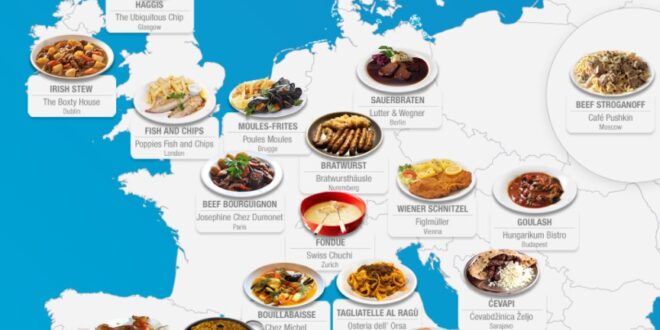Love comes through the stomach. This is completely true because we all love food, and food is love (for some even a little more than it should be). Take a look at the list of traditional European dishes that are delicious and must be tried at least once in a lifetime!
Each Country Nurtures Its Gastronomic Identity
Most tourist countries, and those that aspire to that title, can boast of recognizable gastronomy in the richness of their offer. For example, when we mention Italy – most people will think of pizza and pasta. Speaking of Greece the associations are gyros and tzatziki. We also associate Spain with tapa, Japan with sushi, and Turkey with the fabulous kebab. But which European countries are recognizable in terms of gastronomy? We can say all of them because each of them nurtures their recognizable gastronomic identity. If you like to be a gastro-nomad, then this is an ideal opportunity to introduce you to some of the specialties of European cuisine. So here are some of the famous European foods you simply need to try in your lifetime.
1. Mohnkuchen, Austria
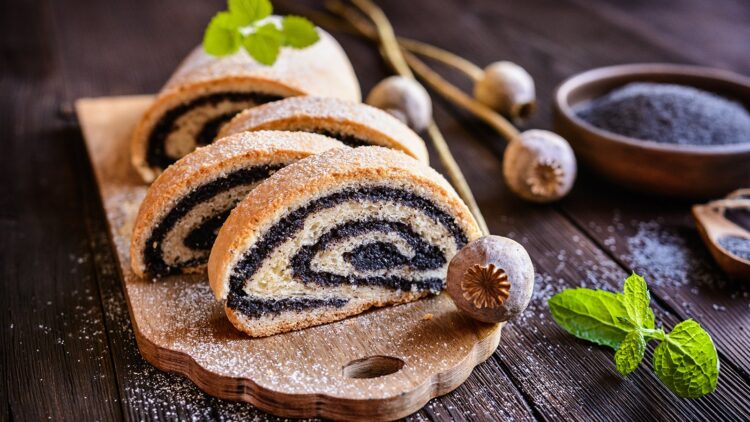
If you have thought of Vienna steak, apple strudel, or Sacher cake – we will point out that these are not Austrian traditional dishes, but dishes typical of Vienna. Most Austrian traditional dishes are based on meat. However, we will present you with an Austrian delicacy – Mohnkuchen. It is also placed in German cuisines, but it is still typical and traditional for Austria. The inside of the cake is made up of poppy seeds – while the bottom is made of dough mixed with yogurt. It is made with crumbs on top, which combine perfectly with the poppy seed mixture during baking. We also recommend that if you can, try Gemüsesuppe. This is a delicious soup of vegetables such as peas, carrots, celery, and the like.
2. Proja, Serbia
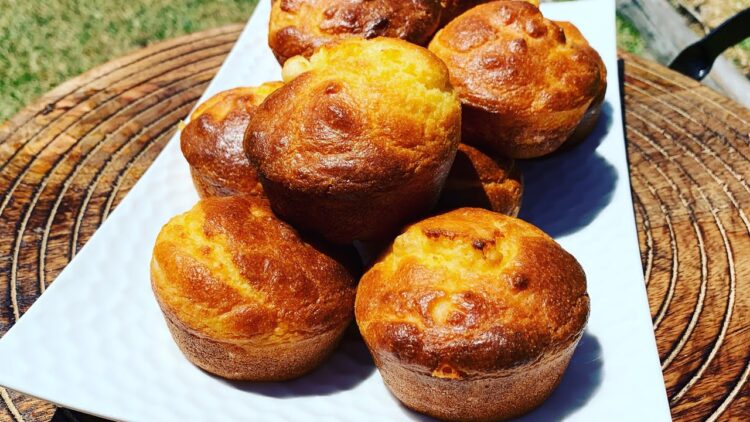
Proja is a kind of cornbread, also known as a “peasant dish”. Once before people made it as a simple bread – and today, it is one of the Serbian specialties. It is made of only three ingredients: coarsely ground corn flour, salt, and water – without the addition of cheese, meat, and the like. For making Proja, we will use about 500gr of grounded corn flour, about 400 ml of lukewarm water with whipped baking powder – and one teaspoon of salt. The dough should be crumbly, slightly thicker than the pancake batter. Mix it all and pour it into a greased pan – and put it in a preheated oven, at 230 degrees C, and bake for about 15-20 minutes. – that is, until a dark brown crust is caught on the surface.
You’ll notice that Proja is very similar to Cornbread or its slightly softer version of spoon bread – which is, according to spoonbreadbistro.com, also one of the very popular dishes in Europe and the USA. True, most of the ingredients are similar, but the peasant Proja doesn’t use milk and butter, although you will find other ingredients in more modern versions. More modern variants of Proja in which wheat flour, eggs, yogurt, cheese, cucumbers, chopped peppers are added are also very tasty. However, this does not change the fact that the basic version is very tasty and authentic due to the way it is baked in old brick ovens.
3. Clark’s Pie, Wales

Those who were in Cardiff and researched it well – could come across a small restaurant that has been family-owned for over a hundred years. Clark’s Pie was founded precisely for the meat pie of the same name, which is also known as “Clarkies”. The recipe is still top-secret – and the pie itself consists of a thin and crispy dough filled with a mixture of meat, juice, and vegetables. The pie can be eaten with your hands, and each piece has the inscription “Clarpie” on it. You can choose between bigger and smaller pies, a little spicier, or pies with pieces of chicken. You can also choose the one with tomato and onion flavors, pies stuffed with chicken and mushrooms, meat shells, beef and vegetables – and finally the vegetarian version with cheese and onions.
4. Hakarl, Iceland
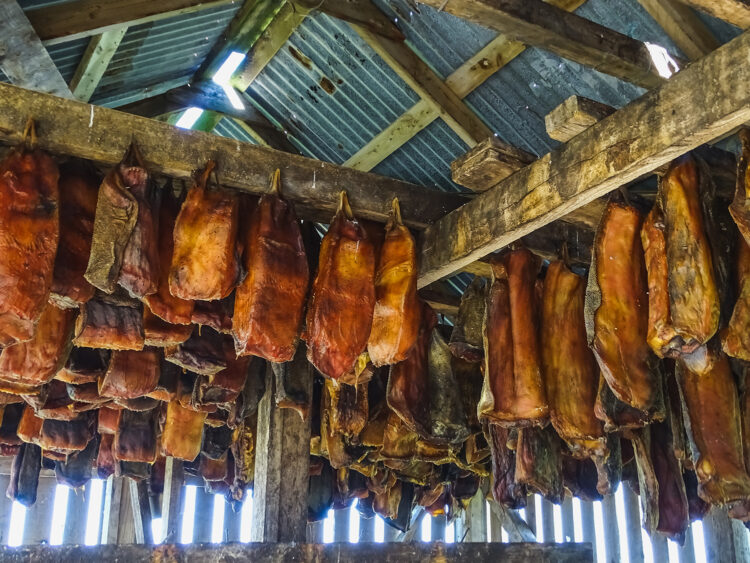
Due to the weather, Iceland is not rich in high steppes, and thus the indigenous population has adapted its menu over the centuries – so that most food is based on meat, especially fish and dairy products. Most dishes in this area have not been cooked before and are dried due to a lack of salt. That is how Hakarl, a dried shark, remains a delicacy even today. It is important to point out that it is strongly recommended that you do prepare it in your homes if you don’t know – or if someone has not shown it to you. If Hakarl is not salted and stored properly – it can cause you various problems, including food poisoning. It is prepared by cleaning, washing, and marinating a part of the shark near the sea for 6-7 weeks. After that time has passed, take it out of the marinade. This process softens the meat and releases toxins such as ammonia that can poison you. It is then placed in a smokehouse and smoked. But this dish is not for everyone.
5. Žur, Poland
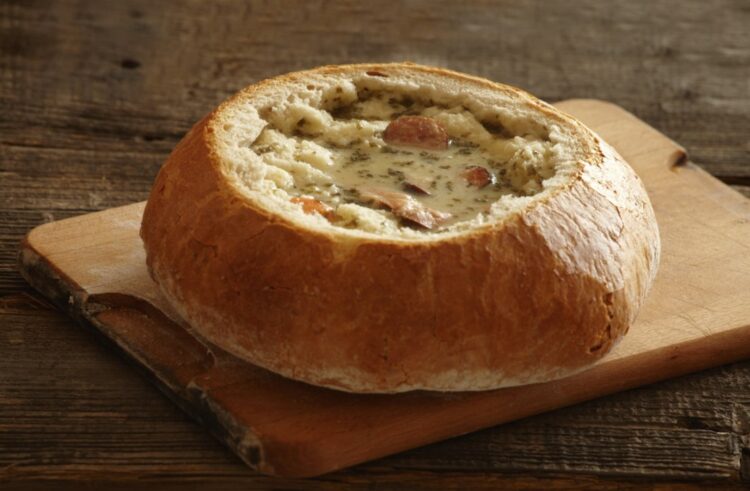
This is the soup that has a very interesting name Žur and it is a truly wonderful thing to taste. It is a sour rye flour soup with white sausages and hard-boiled eggs – all served in bread. There is another, very similar soup called Žurek – which is slightčy different because potatoes and sometimes sour cream can be added to it. This soup is characteristic of Slovenian cuisine and you will find it in the Czech Republic, but also in Belarus and Russia – where they have their special version of the soup, the famous Borsch.
Conclusion
So, as we said – every cuisine has its characteristic dishes that characterize that particular country. When you travel and tour different countries, you want to get to know the cuisine of that area. The importance of gastronomy in choosing a destination varies. Somewhere it is just a small cube in the whole mosaic of the attraction of the place – and sometimes it is the main driver of the trip. In any case, food is an important factor that will attract you to a destination. We have presented to you only a small part of European culinary values that are also very authentic. We hope the rest you will find out for yourself.
 Hi Boox Popular Magazine 2024
Hi Boox Popular Magazine 2024
